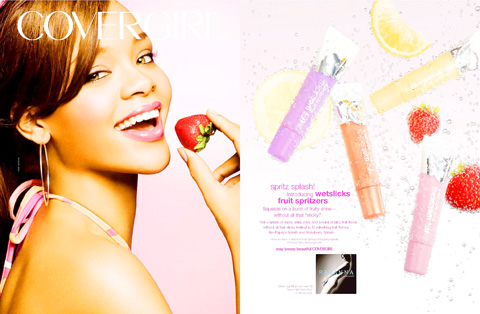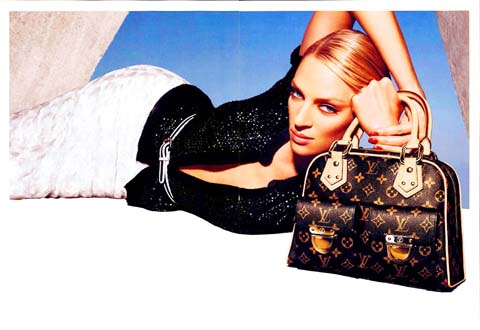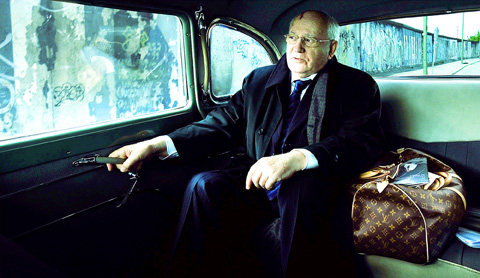Early last year, marketing executives at Totes Isotoner, a Cincinnati company that had spent the previous 30 years churning out a reliable lineup of humble umbrellas, crowded around a computer and listened to a teenage singer from Barbados named Rihanna breeze through a tune titled, appropriately, Umbrella.
The song, not yet released, had commercial, jingle-ready lyrics and a stick-in-your-head hook: “You can stand under my umbrella, ella, ella, eh, eh, eh.” Totes, which hadn’t deployed celebrity endorsements since the former NFL quarterback Dan Marino hawked its gloves more than a decade earlier, was smitten. Umbrella became a corporate rallying cry, with the song drifting through Totes’ offices at all hours.
Rihanna and her representatives wanted Totes to do more, however, than merely use her to peddle a product. They wanted Totes to create customized umbrellas featuring sparkly fabrics and glittery charms on the handles — all recommended by the emerging star and her team. Totes also guaranteed the singer a percentage of the sales of the umbrellas.

NY TIMES NEWS SERVICE
Umbrella went on to become a huge, Grammy-winning hit. And Totes, although it declines to discuss sales data, describes its relationship with Rihanna as “invaluable.” The company, which had never tried such a sweeping design shake-up before, says it now reaches younger shoppers and that traffic on its Web site — which links to Rihanna’s own site — has soared.
AUTHENTIC CONNECTION
“We’ve worked hard to build me and my name up as a brand,” Rihanna says. “We always want to bring an authentic connection to whatever we do. It must be sincere and people have to feel that.”

NY TIMES NEWS SERVICE
But where the star ends and the product and pitch begin has grown less and less discernible in the era of the human billboard.
These days, it’s nearly impossible to surf the Internet, open a newspaper or magazine, or watch television without seeing a celebrity selling something, whether it’s umbrellas, soda, cars, phones, medications, cosmetics, jewelry, clothing or even mutual funds.
Nicole Kidman sashays in ads for Chanel No. 5 perfume. Eva Longoria, the bombshellette star of Desperate Housewives, sells L’Oreal Paris hair color. Jessica Simpson struts for a hair extension company, HairUWear, and the acne skin-care line Proactiv Solution. And Jamie Lee Curtis spoons up Dannon Activia yogurt while promoting environmentally friendly Honda cars.

PHOTO: AP
Using celebrities for promotion is hardly new. Film stars in the 1940s posed for cigarette companies, and Bob Hope pitched American Express in the late 1950s. Joe Namath slipped into Hanes pantyhose in the 1970s, and Bill Cosby jiggled for Jell-O for three decades. Sports icons like Michael Jordan and Tiger Woods elevated the practice, often scoring more in endorsement and licensing dollars than from their actual sports earnings.
But over the last decade, corporate brands have increasingly turned to Hollywood celebrities and musicians to sell their products. Stars showed up in nearly 14 percent of ads last year, according to Millward Brown, a marketing research agency. While that number has more than doubled in the last decade, it is off from a peak of 19 percent in 2004. (Hey, it could be more extreme: Celebrities appear in 24 percent of the ads in India and 45 percent in Taiwan.)
Starlets and aging rockers are likely to continue popping up in ads for a very simple reason: Celebrity sells. If consumers believe that a certain star or singer might actually use the product, sales can take off.
“The reality is people want a piece of something they can’t be,” says Eli Portnoy, a branding strategist. “They live vicariously through the products and services that those celebrities are tied to. Years from now, our descendants may look at us and say, ‘God, these were the most gullible people who ever lived.’”
Newer forces are also propping up the celebrity-endorsement boom. Companies, trying to align themselves ever closer to A-list stars (as well as B-listers, C-listers and reality TV pseudocelebrities) and their quicksilver fame are constantly seeking new ways to merge the already-blurry lines between the commercial and entertainment worlds.
Television programmers and music producers are particularly eager to play along as joint marketing deals offer artists new ways to reach audiences while also defraying their own marketing costs. Celebrities have also grown much more sophisticated about the structure and payouts of endorsement deals.
Last fall, the rapper-impresario Sean Combs created a 50-50 joint venture with Diageo, the spirits giant, for Combs to be the brand manager of the Ciroc vodka line. Combs says he made the profit-sharing deal only after refusing to work solely as a pitchman.
“My brand is rocket fuel. It would take this brand 10 years to get to where I can take it in one year,” he says. “I’ve gotten to the point where I don’t want to do just endorsements. I want ownership.”
In the few short years since she exploded onto the music scene, Rihanna, 20, has been involved in about a dozen endorsement and licensing deals. Behind the scenes, her representatives say they vet every offer for two key criteria: how does it support the brand known as Rihanna, and will it help sell more albums?
Rihanna’s commercial for a lip gloss, CoverGirl Wetslicks Fruit Spritzers, opens with outtakes from her steamy Umbrella video, then morphs into a close-up of her wearing the lip gloss before ending with a shot of her album cover — leaving viewers possibly confused whether they just saw an ad for a lip gloss or an album. (Totes, for its part, says it cares not a whit about CoverGirl also capitalizing on Umbrella. The more the merrier, its executives say, because ubiquity benefits everybody in brandland.)
IN SICKNESS AND IN HEALTH ...
To be sure, marrying a brand to a celebrity has its perils. Just last month, Christian Dior yanked ads from China featuring the actress Sharon Stone after she suggested that the earthquakes that killed tens of thousands of people in China were karmic retribution for the country’s policies toward Tibet.
Yet no less an expert than the comedian Ellen DeGeneres enthusiastically embraces the endorsement whirlwind.
“It’s flattering that companies think of you and they want to work with you,” she says, adding that she is working with American Express because she liked earlier ads the company did with Jerry Seinfeld. The AmEx ads routinely appear first during her talk show.
Although she says she would consider other endorsement deals, she’s not actively looking.
“I would not feel good if I had made a deal and was making money for something that I’m not proud of and don’t have any control over,” she says. “Now watch, cut to next week and I’m endorsing five different things. Look, bread! Isn’t it great? And what goes well with bread? Mayonnaise!”

Following the shock complete failure of all the recall votes against Chinese Nationalist Party (KMT) lawmakers on July 26, pan-blue supporters and the Chinese Communist Party (CCP) were giddy with victory. A notable exception was KMT Chairman Eric Chu (朱立倫), who knew better. At a press conference on July 29, he bowed deeply in gratitude to the voters and said the recalls were “not about which party won or lost, but were a great victory for the Taiwanese voters.” The entire recall process was a disaster for both the KMT and the Democratic Progressive Party (DPP). The only bright spot for

As last month dawned, the Democratic Progressive Party (DPP) was in a good position. The recall campaigns had strong momentum, polling showed many Chinese Nationalist Party (KMT) lawmakers at risk of recall and even the KMT was bracing for losing seats while facing a tsunami of voter fraud investigations. Polling pointed to some of the recalls being a lock for victory. Though in most districts the majority was against recalling their lawmaker, among voters “definitely” planning to vote, there were double-digit margins in favor of recall in at least five districts, with three districts near or above 20 percent in

From Godzilla’s fiery atomic breath to post-apocalyptic anime and harrowing depictions of radiation sickness, the influence of the nuclear bombings of Hiroshima and Nagasaki runs deep in Japanese popular culture. In the 80 years since the World War II attacks, stories of destruction and mutation have been fused with fears around natural disasters and, more recently, the Fukushima crisis. Classic manga and anime series Astro Boy is called “Mighty Atom” in Japanese, while city-leveling explosions loom large in other titles such as Akira, Neon Genesis Evangelion and Attack on Titan. “Living through tremendous pain” and overcoming trauma is a recurrent theme in Japan’s

The great number of islands that make up the Penghu archipelago make it a fascinating place to come back and explore again and again. On your next trip to Penghu, why not get off the beaten path and explore a lesser-traveled outlying island? Jibei Island (吉貝嶼) in Baisha Township (白沙鄉) is a popular destination for its long white sand beach and water activities. However, three other permanently inhabited islands in the township put a unique spin on the traditional Penghu charm, making them great destinations for the curious tourist: Yuanbeiyu (員貝嶼), Niaoyu (鳥嶼) and Dacangyu (大倉嶼). YUANBEIYU Citou Wharf (岐頭碼頭) connects the mainland